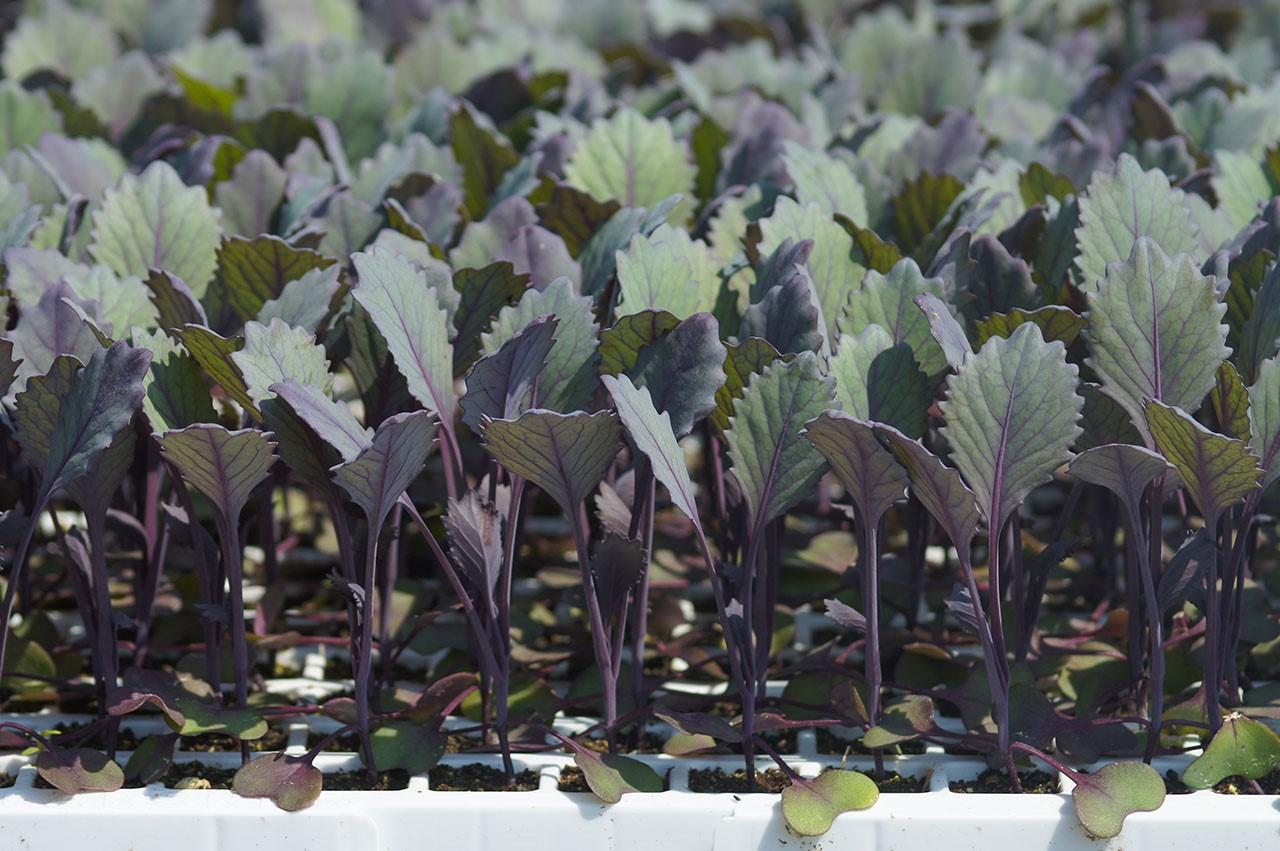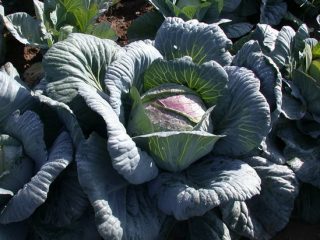Content
Red cabbage seedlings increase the chances of the healthy vegetable taking root. Outwardly, it is similar to its white cabbage relative, differing only in color. Although the yield of the variety is not so high, red cabbage has good immunity to disease. The seeds are suitable for sowing in open ground. To play it safe, many people prefer to grow the plant at home and only then replant it in a permanent location.
When to plant red cabbage for seedlings
The determining factor when choosing a date is the region of residence. You can plant red cabbage seedlings in spring, summer or autumn. If the crop will be on the windowsill, you need to check the weather forecast for frost.

The favorable period for planting is spring.
In the southern regions, work is carried out from the beginning of February to the end of March. In the middle zone they start in March or May. In the Far East, it is recommended to plant red cabbage in the last months of spring.
How to plant red cabbage seedlings
When growing vegetables, gardeners face a number of difficulties.Therefore, it makes sense to analyze each step separately.
Seed preparation
The main reason for material loss is lack of processing. Raw materials are subjected to disinfection measures to eliminate possible threats. To do this, place the seeds in a glass of hot water and keep for half an hour.
The temperature should remain at its original temperature. Consequently, the owner will have to add water every five minutes. After 30 minutes, the material is cooled in cool water (≈ three minutes).
Selection of capacity
The choice of dishes in which the seeds will grow is standard. Use a small container 30 cm wide and up to 15 cm high. Box or container - depends on the gardener. The main thing is that it fits on the windowsill.

The container for red cabbage seedlings can be made of any material
Soil preparation
Drainage material is poured into an empty container: brick, pebbles, expanded clay, remnants of broken tiles or something else. Then the substrate is prepared. To make red cabbage seedlings feel comfortable, add an organic additive consisting of a small amount of sand, one share of turf, two shares of humus and 200 g of ash.
Planting red cabbage for seedlings
Furrows are formed in the prepared soil. A distance of 10-20 mm is maintained between the rows. You need to sow red cabbage for seedlings by lightly sprinkling the seeds. When the work is done, the soil is moistened and covered with film.
Seedlings need warmth. Maintaining the temperature within +25 °C is a necessary condition. There should be no direct sunlight.
Seedling care
In three days the shoots will appear. After this, the container is transferred to the windowsill and the cover is removed. Over the course of a week, the temperature is lowered to 5-12 °C. After seven days it is maintained in the range of 15-20 °C.

Since red cabbage seedlings are very fragile, use a spray bottle or a small watering can for watering.
It is advisable to prevent the appearance of dried crust and water regularly. The room is ventilated at least once a day.
Picking
To get more viable heads, red cabbage needs to be sown a second time. The picking is carried out a week after the initial landing. By that time, leaves should appear on the seedlings.
They also dive for another purpose - so that the plant can receive more light. Before the procedure, the culture is abundantly moistened. This minimizes stress.
Drainage holes are made in the glass, then the substrate is poured. There should be 2 cm of free space between the top of the glass and the ground. To transplant red cabbage, dig a hole in the soil and carefully pull out the seedling.

Picking red cabbage seedlings is best done with bare hands.
The culture is planted in a prepared glass, deepening to the length of one leaf. The soil is compacted and watered with a sprayer. After all operations are completed, the container is placed in a shaded place with a temperature of +22 °C.
The seedlings, which have successfully survived the picking, are placed again on the windowsill after a few days. In poor lighting, use UV lamps.
Feeding
Knowing how to plant red cabbage seedlings is only half the skill. A gardener needs to know how to keep it alive and stimulate growth.The process of caring for red-headed vegetables involves applying fertilizing.
When four leaves appear on the seedlings, apply the first fertilizer. Organic additives are not yet used, giving preference to nitrogen complexes.
The second fertilizer is used 7-10 days before transplanting to the main place. Organic matter is appropriate here - cow manure or bird droppings. When combined with potassium and phosphorus, red cabbage seedlings will receive all the necessary substances.

Azofoska received its name due to the equal content of nitrogen, phosphorus and potassium, which is extremely useful for red cabbage seedlings
Late-ripening varieties are fed additionally. Fertilizer is applied a month before harvest. To do this, prepare a solution: place wood ash in a bucket of warm water. After mixing, dilute in a concentration of 1:4.
Hardening of seedlings
When the temperature outside is +10 °C, the seedlings are hardened. For the first time, red cabbage is put out the door for an hour. In subsequent days, another hour is added to this time.
A week before planting, the container is left outdoors for up to 12 hours. In the last 24 hours, it is advisable to leave it overnight. But if temperatures are too low, this step is skipped.
Planting seedlings in the ground
Before planting red cabbage in open ground, the seedlings are checked for damage. They try to select healthy seedlings with stems 5 mm wide. In order to increase productivity, they refuse to overgrow, paying attention to squat sprouts.
There is no need to skimp on space on the site. It is better to place the seedlings as separated as possible so that the plantings can grow. In addition, a dense location increases the risk of infection.

Before transplanting, it will be useful to fertilize the soil with superphosphate.
When planting in rows, take into account the size of the head of cabbage. The larger it is, the farther the plants should be placed from each other. For early varieties, the optimal option is 50 cm. The distance between mid-season varieties should be 50 cm or more, for late-ripening varieties - from 60 cm.
It is important to choose the right time. For example, landing in cloudy weather can be considered a failure. You need to maintain restraint with fertilizers and watering. Because of the desire to get huge heads of cabbage, newcomers waterlog the plantings and attract the attention of pests.
Red cabbage does not produce a large yield, but it is also not demanding. The crop is suitable for cultivation in different regions of the Russian Federation, including Siberia and the Urals.
Possible problems
Despite all the features, red cabbage is unpretentious. This also applies to seedlings. If not properly cared for, growths appear on the shoots, the leaves turn yellow and become covered with spots.

Beginners sometimes plant red cabbage seedlings in the ground directly with the container, which should not be done
A common problem is the frequency of watering.The soil should be moistened as the top layer dries, but a crust should not be allowed to form. In the first months, it is advisable to expose the seedlings to additional lighting. UV lamps are turned on in the morning and evening.
Many summer residents are guided by the lunar calendar. This will help you choose a specific day in March or May.
Conclusion
Red cabbage seedlings germinate in 3-4 days. At that point, the owner can select viable specimens to increase yield. When 5-6 leaves appear on the seedlings, the crop is transplanted to a permanent place. The requirements for the site are minimal - loose and nutritious soil.








